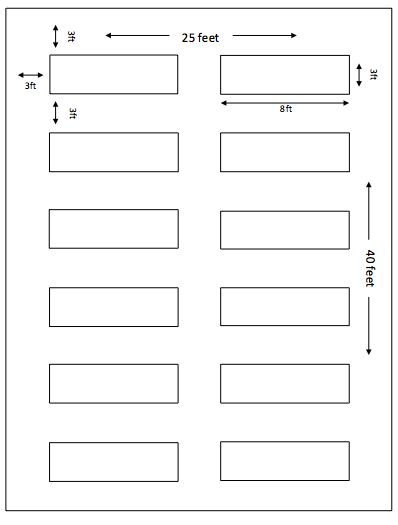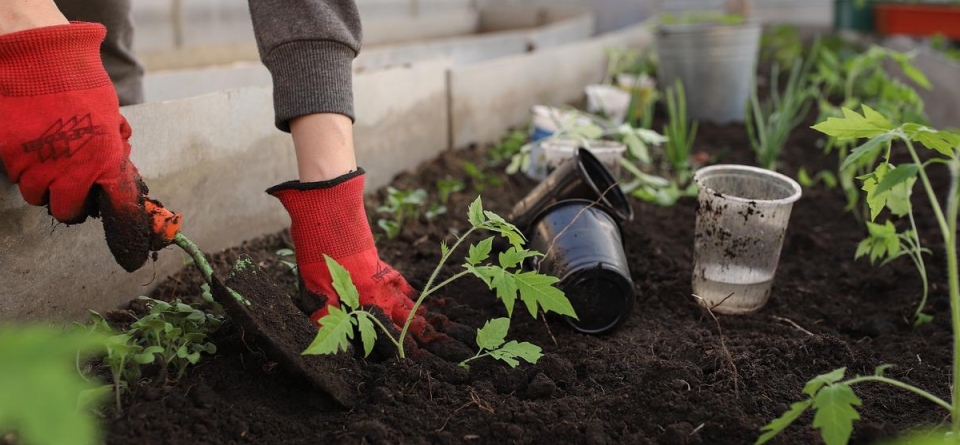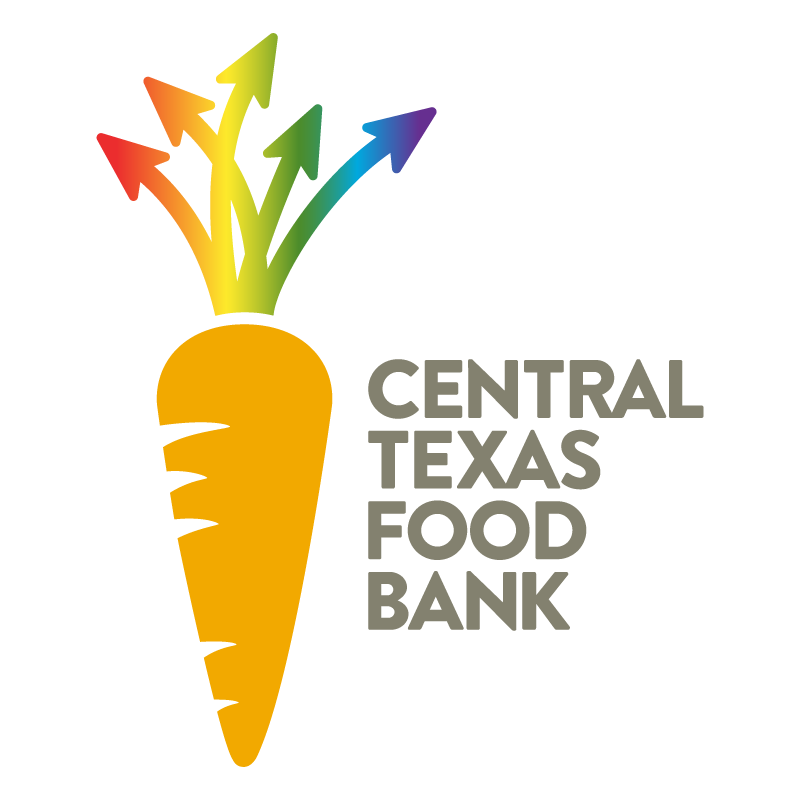Before You Start
The garden committee’s first task is to build the physical garden. Before doing so, they must assess the identified space. It is best to build the garden in an area where it will be visible and accessible to the community. Sites that provide such exposure could be a park, neighborhood, community center, church, SNAP/WIC site, or any other convening space. Once an ideal space is identified, the committee will need to assess the viability of the land, its ability to sustain plant life, and its capacity to fulfill the needs of the garden program. These factors include but are not limited to:
- Light availability
- Soil health
- Reliable water source
The cost of building the garden depends on what styles of gardening you incorporate into your program, the size of the garden, the structures you’d like to include (toolshed, greenhouse, etc.), and what materials you already have on hand.
For more detailed information about how to build garden, we recommend the following books and guides:
- SFC Intro to Food Gardening
- Texas Organic Vegetable Gardening by J. Howard Garrett & C. Malcom Beck
- The No-Till Organic Vegetable Farm by Daniel Mays
- The Market Gardener; A Successful Grower’s Handbook by Jean-Martin Fortier
- Edible Landscaping by Rosalind Creasy
- How to Grow More Vegetables by John Jeavons
- Native and Adaptive Landscaping Plants; an Earthwise guide for Central Texas by Texas AgriLife Extension
Sample Budgets And Planning Resources
Listed below is a sample budges for simple raised beds, as well as a design for a small garden (see fig. 7). The budget and plan does not include the space and materials needed for other structures, such as a tool shed. Simplicity is encouraged, but not required, in the initial stages of a garden program. Many garden programs assess community engagement and needs in the months following the garden’s implementation, and then add other amenities as seen fit.
- Sample budget
- Sample garden design
- How to calculate topsoil needed.
| SAMPLE BUDGET FOR 3' x 8' RAISED BED VEGETABLE GARDEN (CEDAR) | |||
| ITEM | QTY PER BED | UNIT PRICE | TOTAL PER BED |
| Hose (Flexon 5/8in x 15ft Rubber & Vinyl) | 1 | $9.48 | $9.48 |
| Shovel (Project Source 45in Wood Handle) | 1 | $8.12 | $8.12 |
| Cedar 2X6X8 (ReliaBilt) | 4 | $30.98 | $123.92 |
| Cedar 2X6X12 (ReliaBilt) | 1 | $52.98 | $52.98 |
| Cedar 4X4X8 (ReliaBilt) | 1 | $35.98 | $35.98 |
| Screws (60 ct Power Pro #10 x 3-1/2-in Bronze Epoxy Flat Exterior Wood Screws) | 1 | $10.48 | $10.48 |
| Construction Angles (Simpson Strong-Tie 1.4in x 6.7in X 3.1in 16 Gauge G90 Galvanized Steel) | 8 | $2.98 | $23.84 |
| Soil (1 cubic ft Living Earth Organic Garden Soil) | 18 | $4.98 | $89.64 |
| TOTAL INSTALLATION COST | $354.44 | ||
| SAMPLE BUDGET FOR 4' x 4' RAISED BED VEGETABLE GARDEN (TREATED WOOD) | |||
| ITEM | QTY PER BED | UNIT PRICE | TOTAL PER BED |
| Hose (Flexon 5/8in x 15ft Rubber & Vinyl) | 1 | $9.48 | $9.48 |
| Shovel (Project Source 45in Wood Handle) | 1 | $8.12 | $8.12 |
| Treated 2X8X8 Lumber (Severe Weather #2 Prime Pressure Treated Lumber) | 4 | $9.68 | $38.72 |
| Screws (60 ct Power Pro #10 x 3-1/2-in Bronze Epoxy Flat Exterior Wood Screws) | 1 | $10.48 | $10.48 |
| Soil (1 cubic ft Living Earth Organic Garden Soil) | 12 | $4.98 | $59.76 |
| TOTAL PER BED | $126.56 | ||
| ANNUAL PLANTING AND MAINTENANCE | |||
| ITEM | QTY PER BED | UNIT PRICE | TOTAL PER BED |
| Seed Packets (Ferry-Morse, average price) | 15 | $1.96 | $29.40 |
| Fertilizer (6 lbs Jobe's Organics Vegetable Food) | 1 | $10.48 | $10.48 |
| ANNUAL PLANTING AND MAINTENANCE | $39.88 | ||

Fig. 7. Simple Raised Bed Garden Design
Resources For A Successful Garden
Each resource page includes links and insights into some of the key components that make a garden successful.
- Tool Shack from Keep Austin Beautiful: A tool shack lending library that supplies community groups with free access to tools.
- Sustainable Food Center's Introduction to Organic Gardening class.
- Texas A & M Planting Guide: A guide to what to plant in Central Texas along with corresponding month(s) to plant during.
- Texas A & M Soil Testing Guide: A guide in how to collect and send soil samples.
- Farmer’s Alamance Planting Guide: Enter your zip code to view a planting calendar for your region.
- Texas A & M Extension Program: Click the “Contact” Tab, then click the “Contact Your County Office” button, and scroll then to find the link for the AgriLife Extension leaders in your county.
- The Natural Gardner Information Sheets: A monthly guide to help you in the garden
- Texas A&M Travis county Extension list of resources.
- Sustainable Food Center's list of resources.
- Ladybird Wildflower Center's Seed Grant.
- Green Corn Project is a nonprofit in Austin, various gardening guides onsite.
One of the most valuable resources a community garden can have is the community that surrounds it. Check out your surrounding High Schools, neighboring elementary schools, Boy Scout Groups, Girl Scout Groups, Café’s, Restaurants and Churches. These organizations can help with volunteering, donations, and building relationships within your community.
Classes in the Community:
- The Natural Gardener: Offers free classes throughout the year.
- Austin Permaculture Guild
- Le Flaca
- Central Texas Mycology Society
Non-profits in Austin area:
- Through SFC Share the Harvest you can apply to receive resources such as seeds, plants, compost, fertilizers, and garden education materials four times a year in exchange for tracking the amount of food grown and shared.
- The Natural Gardener Newsletter is a weekly email with information on seasonal gardening tips, plant challenges and solutions, and product sales at The Natural Gardener.
- Austin Organic Gardener’s host monthly horticultural relevant seminars. Website also includes resources on seeds, growing practices, composting, herb, and food justice
- Tree Folks is an organization that gives free trees to nonprofits/ Austin communities
- Fruitful Commons is a nonprofit supporting individuals, neighborhoods and organizations who are spearheading collaborative, equitable, and regenerative community agriculture projects that benefit neighborhoods and the greater whole.
Online community:
- Next Door: App/online website where communities register for hyperlocal social networking services. People can post about needing help with projects, free stuff available, selling things and more.
- Austin Garden’s Sub-Reddit: Online forum where Austenite’s post various questions, volunteer opportunities and resources.
- Facebook Marketplace: Online forum to buy and sell used items. It also has a ‘free’ items section.
- Austin Community Garden Coalition: An online coalition collaborated with the city of Austin.
City of Austin:
- Grow Green is a gardening education program that promotes sustainable landscaping practices. It addresses water quality and conservation, recycling, encourages using the right plant in the right place and the least impact-related way to address pest issues.
- Soil Kitchen offers free soil testing once a year.
- The Community Gardens Program exists to help residents start community gardens. The City of Austin supports garden projects on many kinds of land, but this guide is specifically for starting a community garden on city owned land. In addition, they have also laid out steps for starting a garden.
Community Gardens gain sustainability and power through dedicated leaders, thoughtful planning, and a mission reflected in the community’s input. To meet the basic needs of a garden, it needs to be funded. Which can be one of the greatest challenges to face as a community garden. Here are some methods to raise funds for your garden.
Grants:
One of the most common initial tactics for funding a garden. There are plenty of state, private, corporate, municipal grants directed for small community projects.
Grants writing assistance:
- Texas Grants Resource Center: Texas Grants Resource Center (TGRC) has served as a bridge between the grant-seeking and the grant-making communities. The TGRC is a unit within the Division of Diversity and Community Engagement (DDCE) at the University of Texas at Austin.
- Austin Public Library: List of local organizations that help with grants, grants within Austin, and provides access to the Foundation Directory Online Professional database. This database provides descriptions on grant makers, foundations, corporate giving programs and charities
- Austin Public Health: System for City of Austin Registered, non-profit, tax exempt partner organizations seeking grants
- Grants manager at NPO: If your garden is in association with a pantry, church, or any other non-profit; they most likely already have a fulltime grant manger. Reach out to them for collaboration and advice.
- Private Foundations: A private foundation is a legal entity that is set up for the sole purpose of doing charitable deeds. It’s funding comes from a single person, family, or corporation.
Grants in Austin:
- Texas Department of Agriculture
- American Public Gardens Association
- Preservation Austin
- Austin Public Health: Healthy Living Grant
- Neighborhood-partnering grant
- Austin Community Grant
- Fruitful Commons Mini Grant
Rebates and free stuff:
Fundraising events:
Bake sales, car washes, yard sales, plant sales, walk-a-thons, dinners
Find an organization to partner with you in your community.
Direct Donations and Gifts:
Sponsor: Ask community members, businesses, organizations, churches to sponsor. Sponsor a tree, bench, garden bed, shed, ect.
How The Central Texas Food Bank Can Help
- Click here to view a map of gardens to collaborate with.
- Click here to view the Food Bank's Find Food Now tool.
- Send an inquiry to the Garden Manger, Greg Mast at garden@centraltexasfoodbank.org, about being a host site for the Central Texas Food Bank's ‘Cooking from the Garden’ and ‘Intro to Organic Gardening’ classes.







